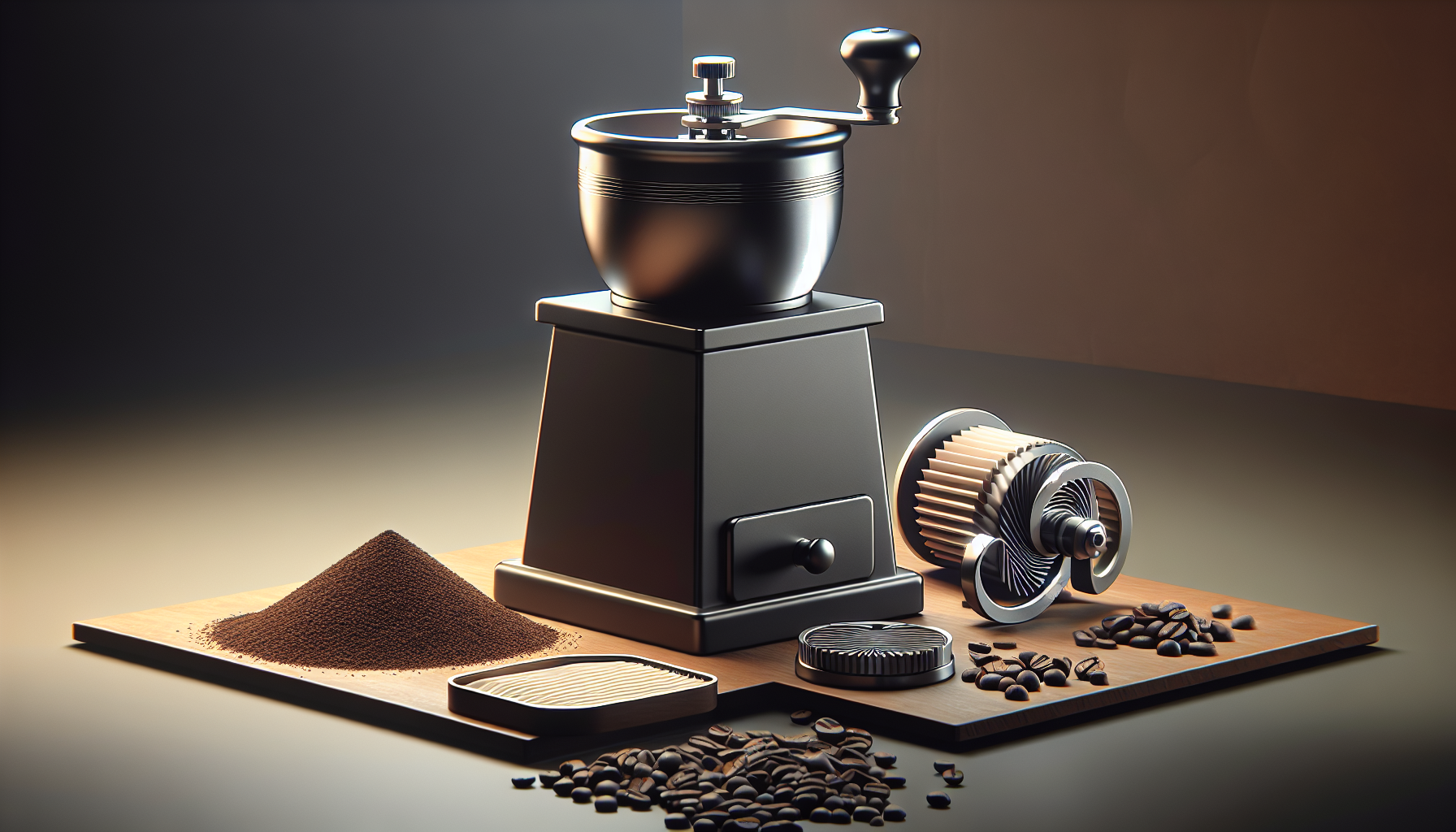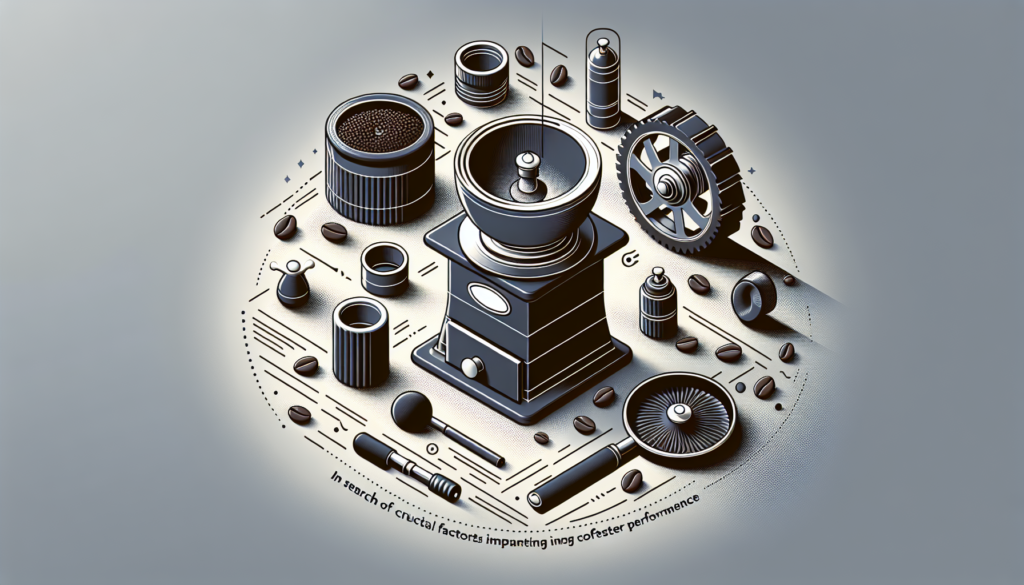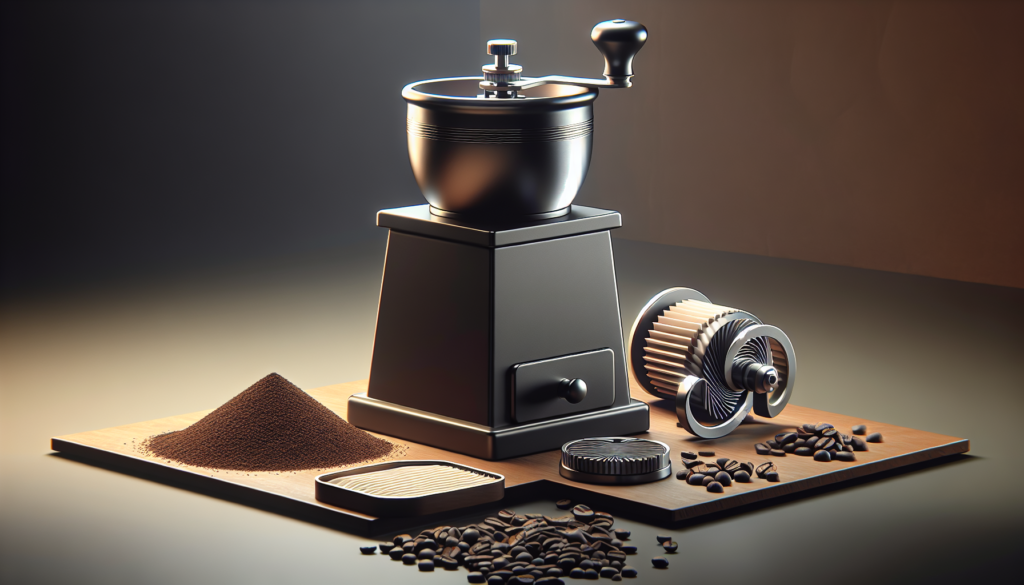
Imagine waking up to the comforting aroma of freshly brewed coffee filling your home. As you eagerly make your way to the kitchen, your mind drifts to the intricate process behind achieving that perfect cup of joe. Have you ever considered the role of material and design in coffee grinder performance? It may surprise you to discover the significant impact these factors have on the quality and flavor of your morning brew. In this article, we will explore how the choice of materials and design principles can elevate your coffee grinding experience, resulting in a more satisfying and flavorful cup of coffee. So grab a mug, settle in, and let’s embark on a journey into the world of coffee grinder performance.

Material Considerations
Contribution of Material to Grinding Efficiency
The choice of material in coffee grinder burrs plays a crucial role in determining the grinding efficiency. In general, steel and ceramic are the two main materials used for burrs. Steel burrs are known for their durability and ability to maintain sharpness over time. They provide a consistent grind size and are ideal for producing finer coffee grounds. On the other hand, ceramic burrs are known for their superior heat resistance, which helps in preventing the coffee beans from overheating during the grinding process. Ceramic burrs are also less likely to rust and can produce a more uniform grind size. Both materials have their pros and cons, and the choice ultimately depends on personal preference and specific grinding needs.
Impact of Material on Durability
Durability is a key factor to consider when choosing a coffee grinder, as it directly affects the longevity and performance of the appliance. Steel burrs are generally considered to be more durable than ceramic burrs. They are less prone to chipping or breaking, making them suitable for heavy-duty usage. However, it is important to note that ceramic burrs can also offer good durability. They are made from high-quality materials and can withstand regular use without compromising their grinding performance. To ensure the longevity of your coffee grinder, it is recommended to choose burrs made from a material that suits your brewing needs and matches your usage frequency.
Effect of Material on Heat Generation
The generation of heat during the grinding process can impact the flavor and quality of the coffee. Steel burrs are known to generate more heat compared to ceramic burrs. This heat can potentially alter the flavor profile of the coffee grounds, leading to a less desirable taste. Ceramic burrs, on the other hand, have excellent heat resistance properties. They are able to dissipate heat more efficiently, preventing the coffee beans from overheating and preserving their natural flavors. If maintaining the maximum flavor potential of your coffee is a priority, opting for a grinder with ceramic burrs may be the better choice.
Comparison of Steel and Ceramic Burr Grinders
Both steel and ceramic burr grinders have their own advantages and disadvantages. Steel burrs are durable, offer consistent grind size, and are suitable for fine grinding. They are also more affordable compared to ceramic burrs, making them a popular choice among coffee enthusiasts. Ceramic burrs, on the other hand, excel in heat resistance and produce more uniform grind sizes. They are less likely to rust and can provide a smoother flavor in the final cup of coffee. Ultimately, the decision between steel and ceramic burrs depends on individual preferences and requirements.

Design Factors
Size and Shape of Burrs
The size and shape of the burrs in a coffee grinder can greatly impact the grinding performance. Larger burrs generally provide a more efficient and consistent grind, as they have a larger surface area for the coffee beans to come into contact with. Smaller burrs, on the other hand, may struggle with grinding larger quantities of beans at once and may produce less uniform grounds. The shape of the burrs also plays a role in the grind consistency. Conical burrs are known for their ability to produce a consistent grind size, while flat burrs excel in speed and precision. Choosing the right size and shape of burrs depends on factors such as brewing method, desired grind consistency, and personal preference.
Number and Orientation of Burrs
The number and orientation of burrs in a grinder can affect the speed and consistency of the grind. Most grinders have either two flat burrs or two conical burrs, but some models may feature a combination of both. Two burrs provide more surface area for grinding, resulting in a faster and more efficient process. However, it is important to note that the quality and design of the burrs also play a significant role in determining the final grind consistency. The orientation of the burrs, whether they are parallel or perpendicular to each other, can also affect the grinding performance. Parallel burrs are typically used in commercial grinders and offer superior precision and consistency.
Grind Size Adjustment Mechanisms
The ability to adjust the grind size is a crucial feature in a coffee grinder, as it allows you to customize the coarseness or fineness of the coffee grounds according to your brewing method. Different grinders may employ various mechanisms for grind size adjustment, such as stepped or stepless adjustments. Stepped adjustments offer pre-set grind size options, which can be convenient for users who prefer specific settings. Stepless adjustments, on the other hand, provide more flexibility and allow for fine-tuning of the grind size. The mechanism chosen depends on personal preference and the level of precision desired in the brewing process.
Bean Hopper Design
The design of the bean hopper in a coffee grinder can impact the overall user experience. A larger bean hopper means that you can grind larger quantities of coffee beans at once, reducing the need for frequent refilling. However, it is important to consider how quickly you consume your coffee, as stale beans can affect the flavor of the final cup. Some bean hoppers may also feature a lid or sealing mechanism to ensure that the beans are stored in an airtight environment, maintaining their freshness for longer periods. The design of the bean hopper should take into account ease of use, cleanliness, and freshness retention.
Grounds Container Design
The design of the grounds container, where the coffee grounds are collected, is another important consideration in choosing a coffee grinder. A container with a large capacity allows you to grind a sufficient amount of coffee without the need for frequent emptying. The shape and material of the container can also affect the ease of transferring the grounds to your brewing device. Additionally, some containers may feature measurement markings or indicators to help users accurately measure the desired amount of coffee grounds. The design of the grounds container should aim to provide convenience, cleanliness, and ease of use.
Motor Power and Speed
The motor power and speed of a coffee grinder play a significant role in determining the grinding efficiency and consistency. Higher motor power generally results in faster grinding and is suitable for heavy-duty usage. However, it is important to strike a balance between power and speed to avoid overheating the beans or compromising the grind quality. Variable speed control can be a valuable feature, as it allows users to adjust the speed according to the specific coffee beans and desired grind size. The motor power and speed should be chosen based on specific grinding needs, desired brew quality, and user preferences.
In conclusion, the material and design of a coffee grinder are crucial factors that contribute to its performance and overall brewing experience. The choice of material can affect grinding efficiency, durability, and heat generation, with steel and ceramic being the primary options. The design factors, including the size and shape of burrs, number and orientation of burrs, grind size adjustment mechanisms, bean hopper design, grounds container design, and motor power and speed, all play a role in determining the grinding consistency, ease of use, and customization options offered by a coffee grinder. By understanding these material considerations and design factors, you can make an informed decision and choose a coffee grinder that best suits your brewing needs and preferences.